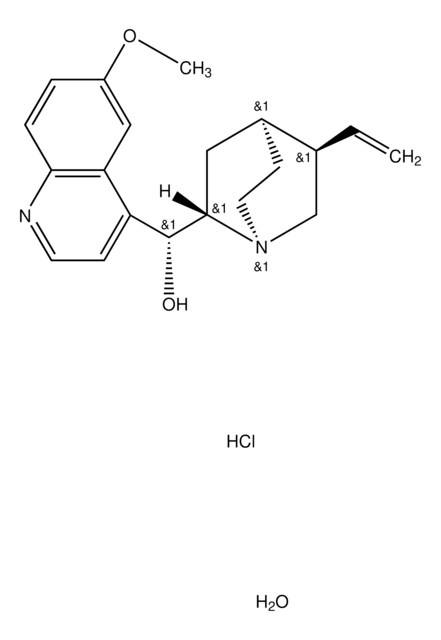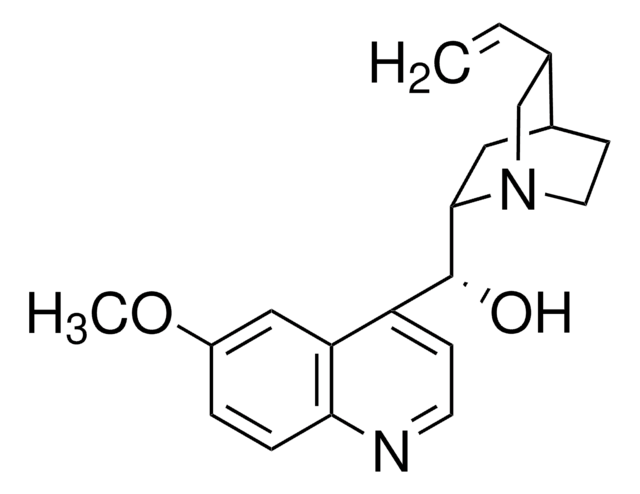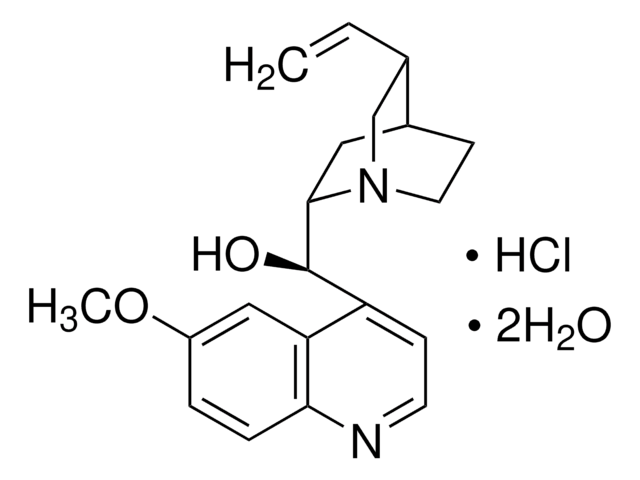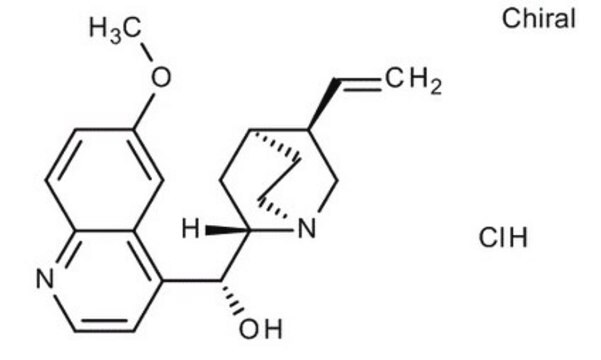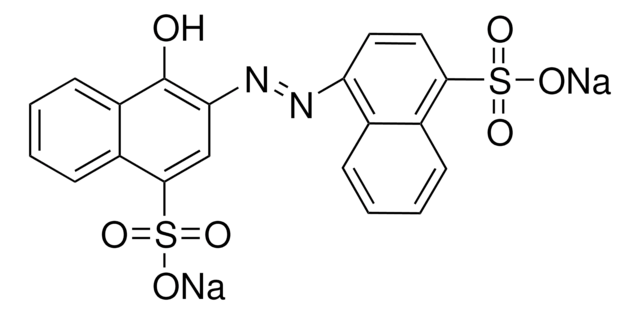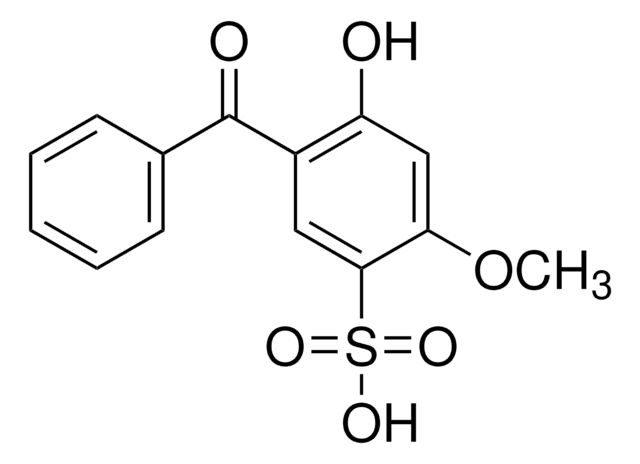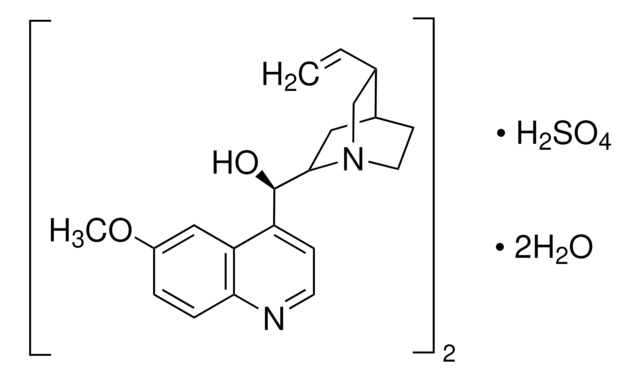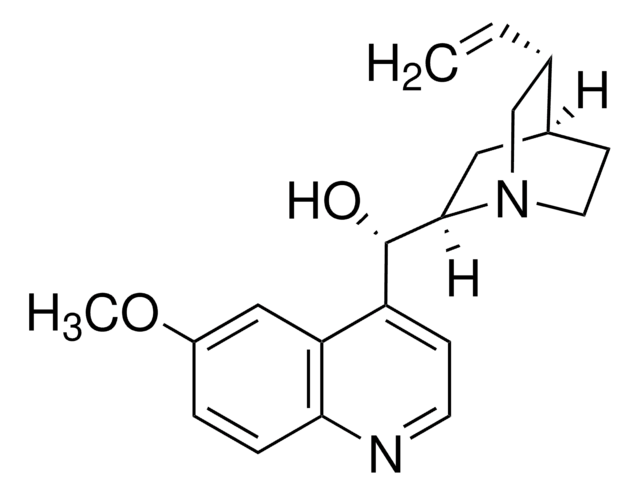22630
Quinine hydrochloride dihydrate
BioReagent, suitable for fluorescence, ≥98.0% (NT)
Sinónimos:
(8α, 9R)-6′-Methoxycinchonan-9-ol monohydrochloride dihydrate
About This Item
Productos recomendados
product line
BioReagent
Quality Level
assay
≥98.0% (NT)
form
powder
optical activity
[α]20/D −230±5°, c = 2% in 0.1 M HCl
impurities
≤10% dihydroquinine hydrochloride (HPLC)
solubility
H2O: soluble
fluorescence
λex 322 nm; λem 450 nm in H2O
λex 347 nm; λem 448 nm in 0.5 M sulfuric acid
suitability
suitable for fluorescence
SMILES string
O.O.Cl.COc1ccc2nccc([C@@H](O)[C@@H]3C[C@@H]4CCN3C[C@@H]4C=C)c2c1
InChI
1S/C20H24N2O2.ClH.2H2O/c1-3-13-12-22-9-7-14(13)10-19(22)20(23)16-6-8-21-18-5-4-15(24-2)11-17(16)18;;;/h3-6,8,11,13-14,19-20,23H,1,7,9-10,12H2,2H3;1H;2*1H2/t13-,14-,19-,20+;;;/m0.../s1
InChI key
MPQKYZPYCSTMEI-FLZPLBAKSA-N
¿Está buscando productos similares? Visita Guía de comparación de productos
¿No encuentra el producto adecuado?
Pruebe nuestro Herramienta de selección de productos.
signalword
Danger
hcodes
Hazard Classifications
Acute Tox. 4 Oral - Resp. Sens. 1 - Skin Sens. 1
Storage Class
11 - Combustible Solids
wgk_germany
WGK 1
flash_point_f
Not applicable
flash_point_c
Not applicable
ppe
dust mask type N95 (US), Eyeshields, Faceshields, Gloves
Elija entre una de las versiones más recientes:
¿Ya tiene este producto?
Encuentre la documentación para los productos que ha comprado recientemente en la Biblioteca de documentos.
Los clientes también vieron
Nuestro equipo de científicos tiene experiencia en todas las áreas de investigación: Ciencias de la vida, Ciencia de los materiales, Síntesis química, Cromatografía, Analítica y muchas otras.
Póngase en contacto con el Servicio técnico